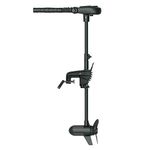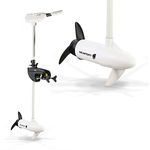10 bestElectric Trolling Motorsof December 2025
112M consumers helped this year.
1
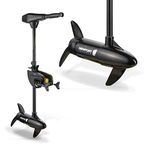
Newport Vessels NV-Series 55lb Thrust Saltwater Transom Mounted Trolling Electric Trolling Motor w/ LED Battery Indicator & 30" Shaft
NEWPORT

9.8
2

Minn Kota Powerdrive 70 Trolling Motor, US2, 60" Shaft Length, 70 lbs Thrust, 24V with Bluetooth
Minn Kota

9.6
3

MotorGuide XI3-55lb Thrust 36" Shaft 12-Volt Kayak Trolling Motor with Wireless FOB Control and GPS
Motorguide

9.3
4
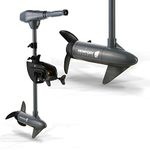
Newport Vessels Kayak Series 55lb Thrust Saltwater Transom Mounted Electric Kayak Trolling Motor with 24" Shaft
NEWPORT

9.1
5

Minn Kota 1352155M Endura Max 55 lb. Thrust, 36" Shaft
Minn Kota

8.8
Other
6
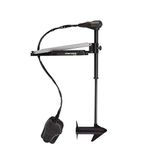
Minn Kota Edge 45 Bowmount Foot Control Trolling Motor with Latch and Door Bracket (45-Pound Thrust, 45-Inch Shaft)
Minn Kota

8.5
7

Newport Vessels NV-Series 46lb Thrust Saltwater Transom Mounted Trolling Electric Trolling Motor w/ LED Battery Indicator & 30" Shaft
NEWPORT

8.3
8

Newport Vessels Newport Pontoon-Series 55lb Thrust Saltwater Electric Pontoon Trolling Motor with Deck Mount Bracket & 55" Shaft
NEWPORT

8.0
9

PARKHO HASWING Electric Trolling Motor – 24V 5 HP Power 39.4 Inch Shaft Protruar Brushless Transom Mount Bracket Stepless Speed Control Boat Fishing Saltwater Freshwater with Magnetic Kill Switch
PARKHO

7.7
10% off
10

Seamax 12V PowerMax 2HP Brushless Trolling Motor with Digital PCB, Frequency Control RPM with High Efficiency Energy Consumption, 65 LBs Thrust, Adjustable 35” Motor Shaft, Good with Lithium Battery
Seamax

7.4
A Guide to Selecting the Best Electric Trolling Motors
Choosing the right electric trolling motor can make a big difference in your boating or fishing experience. The best motor for you depends on your boat size, the waters you navigate, and how you plan to use it. Understanding the key specifications will help you match a motor to your needs, ensuring you get reliable performance, easy handling, and the right amount of power for your adventures.
Thrust (Pounds of Thrust)
Thrust is a measure of how much power the trolling motor can generate to move your boat through the water. It's important because it determines how effectively the motor can propel your boat, especially in wind, current, or with a heavy load. Thrust values typically range from about 30 to over 100 pounds. Smaller boats like kayaks or canoes may only need 30-40 pounds, while larger boats or those carrying more people and gear may require 55 pounds or more. To pick the right thrust, consider your boat's size, weight, and typical conditions—if you often face strong currents or winds, opt for a higher thrust.
Voltage (12V, 24V, 36V)
Voltage refers to the electrical power system the motor uses, which affects both power and battery requirements. Most trolling motors come in 12V, 24V, or 36V options. A 12V system is simpler and lighter, suitable for smaller boats and shorter trips. 24V and 36V systems provide more power and longer run times, ideal for larger boats or extended use. To choose the right voltage, think about how long you want to be on the water and the size of your boat—longer outings and bigger boats benefit from higher voltage systems.
Shaft Length
Shaft length is the distance from the motor head to the propeller, and it ensures the propeller stays submerged at the right depth. This is important for efficient operation and to avoid cavitation (when the propeller sucks in air instead of water). Shaft lengths vary, with shorter shafts for small, low-profile boats and longer shafts for deeper or higher-sided boats. To pick the right shaft length, measure the distance from your boat’s mounting point to the waterline and add a few inches to ensure the propeller stays well below the surface, even in choppy water.
Control Type (Hand, Foot, Remote)
Control type refers to how you steer and adjust the motor. Hand controls are simple and direct, foot controls allow for hands-free operation (great for fishing), and remote controls offer flexibility to operate the motor from anywhere on the boat. The best choice depends on your style—if you like to fish while standing or need to move around, a foot or remote control can be more convenient. If you prefer simplicity and are usually seated near the motor, hand control may be sufficient.
Mount Type (Bow, Transom, Engine Mount)
Mount type is where and how the motor attaches to your boat. Bow mounts are installed at the front and offer better maneuverability, making them popular for fishing. Transom mounts attach to the back and are easier to install, suitable for smaller boats or casual use. Engine mounts attach to the main outboard engine and are less common. Your choice should be guided by your boat’s design and how you plan to use the motor—fishing enthusiasts often prefer bow mounts, while casual users may find transom mounts more practical.
Battery Life and Efficiency
Battery life and efficiency describe how long the motor can run on a full charge and how effectively it uses power. This is important for planning your trips and avoiding getting stranded. Motors with variable speed settings and efficient designs can extend battery life. To choose the right motor, consider how long you typically spend on the water and whether you have easy access to recharge batteries. If you need longer run times, look for motors known for efficiency and consider carrying extra batteries.
Best Reviews Guide Newsletter
Get exclusive articles, recommendations, shopping tips, and sales alerts
Sign up for our newsletter to receive weekly recommendations about seasonal and trendy products
Thank you for subscribing!
By submitting your email address you agree to our Terms and Conditions and Privacy Policy


